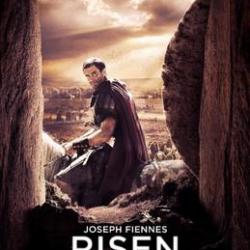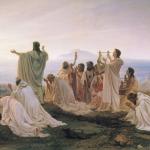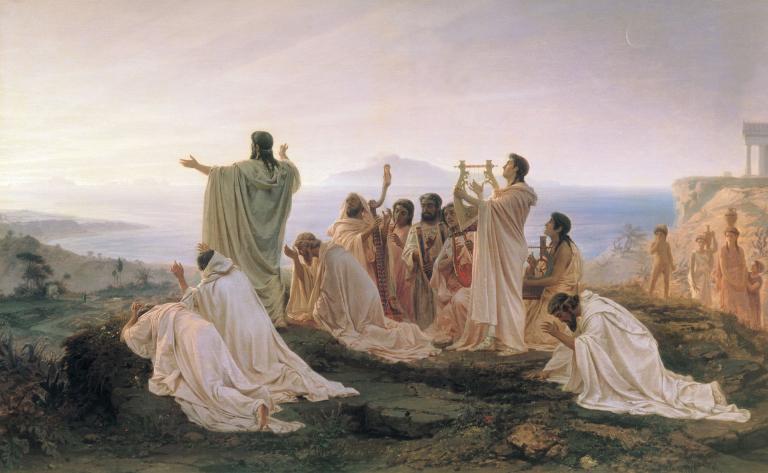
After considerable discussion that began several months ago and grew more intense within recent weeks, we at the Interpreter Foundation have decided to move on from our long-running radio program and to turn, in its place, to a video and audio podcast. Our inaugural effort, in two parts, can be accessed through the following links. We appreciate constructive feedback, and we hope that you’ll find these both enjoyable and useful:
The Interpreter Foundation Podcast — June 23, 2025
In the 23 June 2025 episode of The Interpreter Foundation Podcast, Martin Tanner and Hales Swift discuss the Come, Follow Me Doctrine & Covenants lesson for June 23 – June 29 and the 1886 John Taylor revelation that was recently released. The Come, Follow Me segment of the episode is published separately. (See below.) The audio track is also included in our podcast feed (https://interpreterfoundation.org/feeds/podcast).
In the 23 June 2025 Come, Follow Me segment of the Interpreter Foundation Podcast, Martin Tanner and Hales Swift discuss the Come, Follow Me Doctrine & Covenants lesson for June 23 – June 29 covering D&C 67 to 70.
You can watch the Come, Follow Me segment of the June 23rd episode of the Interpreter Foundation Podcast via the link given immediately above. You can also listen to or download the audio recording. The audio recording will also be included in our podcast feed (https://interpreterfoundation.org/feeds/podcast). The Discussion segment of the 23 June 2025 radio show can be accessed at https://interpreterfoundation.org/interpreter-podcast-june-23-2025.
The Interpreter Foundation Podcast is a weekly discussion of matters of interest to the hosts, guests, and callers of the show. The views expressed on the Interpreter Radio Show are those of the individuals involved and do not necessarily reflect the views of the Interpreter Foundation, nor should statements made on the show be construed as official doctrinal statements of the Church.
Moreover, two other new items were also posted today on the Interpreter Foundation’s notoriously somnolent website:
During 1978, 1979, and 1980, Hugh Nibley taught a Doctrine and Covenants Sunday School class. Cassette recordings were made of these classes and some have survived and were digitized by Steve Whitlock and recently enhanced by Nick Galieti. Most of the tapes were in pretty bad condition. The original recordings usually don’t stop or start at the beginning of the class and there is some background noise. Volumes vary, probably depending upon where the recorder was placed in the room. Many are very low volume but in most cases it’s possible to understand the words. In a couple of cases the ends of one class were put on some space left over from a different class. There’s some mixup around D&C 90-100 that couldn’t be figured out so those recordings are as they were on the tapes. Even with these flaws and missing classes, we believe these these will be interesting to listen to and valuable to your Come, Follow Me study program.
This week we have one lecture relevant to the June 30 – July 6 Come, Follow Me lesson, “No Weapon That Is Formed against You Shall Prosper” covering D&C 71–75.
Once again, Jonn Claybaugh has provided a concise set of notes for students and teachers of the Come, Follow Me curriculum of the Church of Jesus Christ of Latter-day Saints
As you can easily see from the items listed above, the Interpreter Foundation is absolutely obsessed with Brigham Young. In fact, we pay little or no attention to anything else!
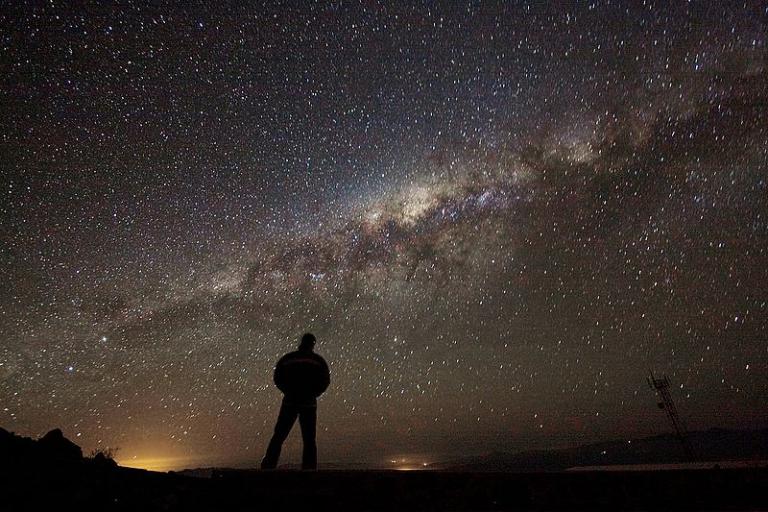
An exciting new scientific instrument has come online: “World’s largest digital camera captures stunning photos of the universe: The Vera C. Rubin Observatory, located on a mountaintop in the Chilean Andes, released its first photos of the universe”
Here’s a piece that’s worth some consideration: “The Moral Nightmare of Losing Our Religion: If nothing is evil, then murder, racism, abuse, and everything else is good!”
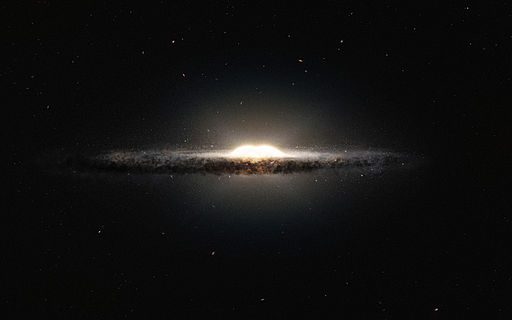
“Zwei Dinge,” wrote the great German philosopher Immanuel Kant, “erfüllen das Gemüt mit immer neuer und zunehmender Bewunderung und Ehrfurcht, je öfter und anhaltender sich das Nachdenken damit beschäftigt: der gestirnte Himmel über mir und das moralische Gesetz in mir.” “Two things fill the mind with ever new and increasing admiration and reverence, the more often and the more steadily reflection is occupied with them: the starry heaven above me and the moral law within me.”
The passage comes from the conclusion of his 1788 Kritik der praktischen Vernunft (the Critique of Practical Reason), one of Kant’s most important works, which focused on one of his central interests, moral philosophy. And, unsurprisingly, most of those who cite the passage proceed thereupon to discuss Kant as a moral philosopher. But he also paid serious attention to astronomy; he wasn’t merely writing an eloquent sentence with a nice parallelism between the deliverances of the conscience and the objective reality of the night sky.
Immanuel Kant did far more than merely passively admire the heavens: He made several notable contributions to astronomy and cosmology before coming to concentrate on philosophy. In the 1750s, Kant read a review in a German journal of a book by Thomas Wright, An Original Theory or New Hypothesis of the Universe (1750). The reviewer said that Wright asserted that the Milky Way was a clue to the distribution of stars in space. This idea evidently caught Kant’s attention, and he soon concluded that, since we often see a clear and distinct band of stars across the heavens — the Milky Way — it must be because our star system is shaped like a broad thin disk and because we are looking at it edgewise In other words, Kant proposed not only the existence of our galaxy, but its proper shape.
Kant announced his conclusion in a 1755 book entitled Allgemeine Naturgeschichte und Theorie des Himmels (A Universal Natural History and Theory of the Heavens). In this book, he also suggested that some of the lens-shaped nebulae in the sky, such as the nebula in Andromeda, might be galaxies of stars just like our own Milky Way galaxy. However, Kant’s innovative ideas remained unnoticed for a long time. His publisher went bankrupt just as the book was printed; copies were confiscated by the courts and most of them disappeared. Even later printings of the book are very rare (and, accordingly, quite valuable).
The existence of separate galaxies was only definitively recognized in the early 1920s, after considerable debate, primarily through the work of Edwin Hubble. Before this, the theorizing of Immanuel Kant notwithstanding, many astronomers believed that the universe consisted only of our Milky Way galaxy. The so-called “spiral nebulae” were thought to be nothing more than clouds within it. Hubble’s 1923 observations of Cepheid variable stars in the Andromeda “nebula” — which, of course, we now recognize as a galaxy in its own right — proved that these nebulae were actually distant, separate galaxies, and vastly larger than anybody had previously imagined.
Over thirty years ago now — sigh! — my late, gifted, and much lamented friend Bill Hamblin and I used the publication history of Br’er Kant’s astronomical book to have some good, clean fun at the expense of a pair of critics of the Restoration. These are Bill’s words:
Going a step further, they seem to maintain that Joseph may have had a predilection for reading Kant in the original German. “Immanuel Kant claimed that the moral perfection of each planet’s inhabitants increased “according to the proportion of [its] distance from the sun.’ Certainly in such an intellectual climate, Joseph Smith’s ideas about pluralism and astronomical hierarchy were not unusual.” The passage they cite as illustrative of Joseph’s “intellectual climate” is from Kant’s 1755 work, Allgemeine Naturgeschichte und Theorie des Himmels, oder Versuch von der Verfassung und dem mechanischen Ursprunge des ganzen Weltgebäudes nach Newtonischen Grundsätzen abgehandelt. But their choice of a work to illustrate Joseph’s “intellectual climate” is particularly unfortunate. “The book’s publisher . . . went bankrupt just at the time Kant’s work was to have been published. His stock was impounded, and as a result copies of the book were for a long time simply unavailable.” Even after being reprinted, “like some other memorable cases of books that came “stillborn from the press,’ Kant’s [work] . . . was virtually unknown in its own day; indeed, it had to wait for more than a century [i.e., until after 1855] for its true greatness to be appreciated.” For example, “In England, Herschel [1738-1822, a native German living in England, and the greatest astronomer of his day], for all his ties with Hannover, did not learn about Kant’s cosmology.” The work was first translated into English in 1900, nearly six decades after Joseph Smith’s death.
Vogel and Metcalfe’s argument that Kant’s work was somehow part of the “intellectual climate” of early nineteenth-century frontier New York is laughable, and is perhaps the most patently absurd of the many environmentalist claims which I have read. I can just imagine the sturdy country yeomen of the Palmyra region gathering in a local tavern for their weekly discussions of the “categorical imperative” over a tankard of ale. Meanwhile, they spend their free moments between milking the cows, splitting rails, and plowing, in brushing up on their philosophical German so they can devour the latest of Kant’s untranslated works late at night by candlelight. It seems to me that Metcalfe will go to absurd lengths to find the most obscure possible parallels between Joseph and his environment in order to undermine the antiquity of the Book of Mormon. [William J. Hamblin, “An Apologist for the Critics: Brent Lee Metcalfe’s Assumptions and Methodologies,” Review of Brent Lee Metcalfe, “Apologetic and Critical Assumptions about Book of Mormon Historicity,” Dialogue 26/3 (Fall 1993): 154-84, in FARMS Review 6 (1994): 434-523.]




